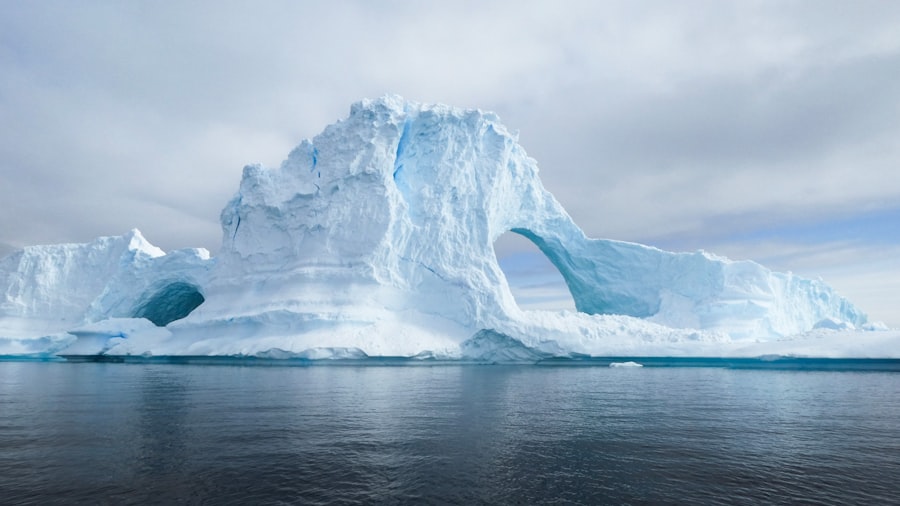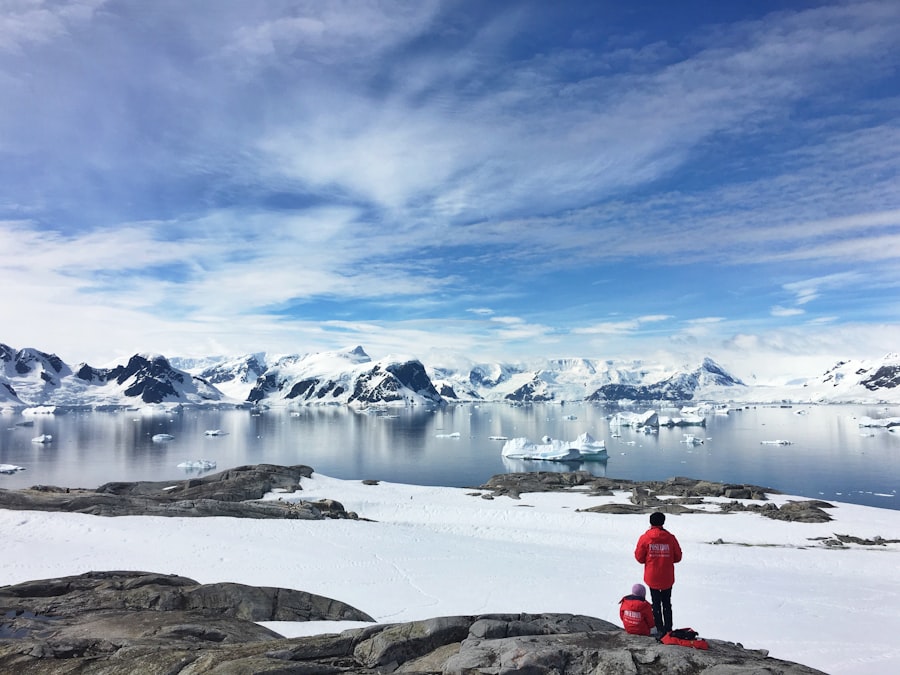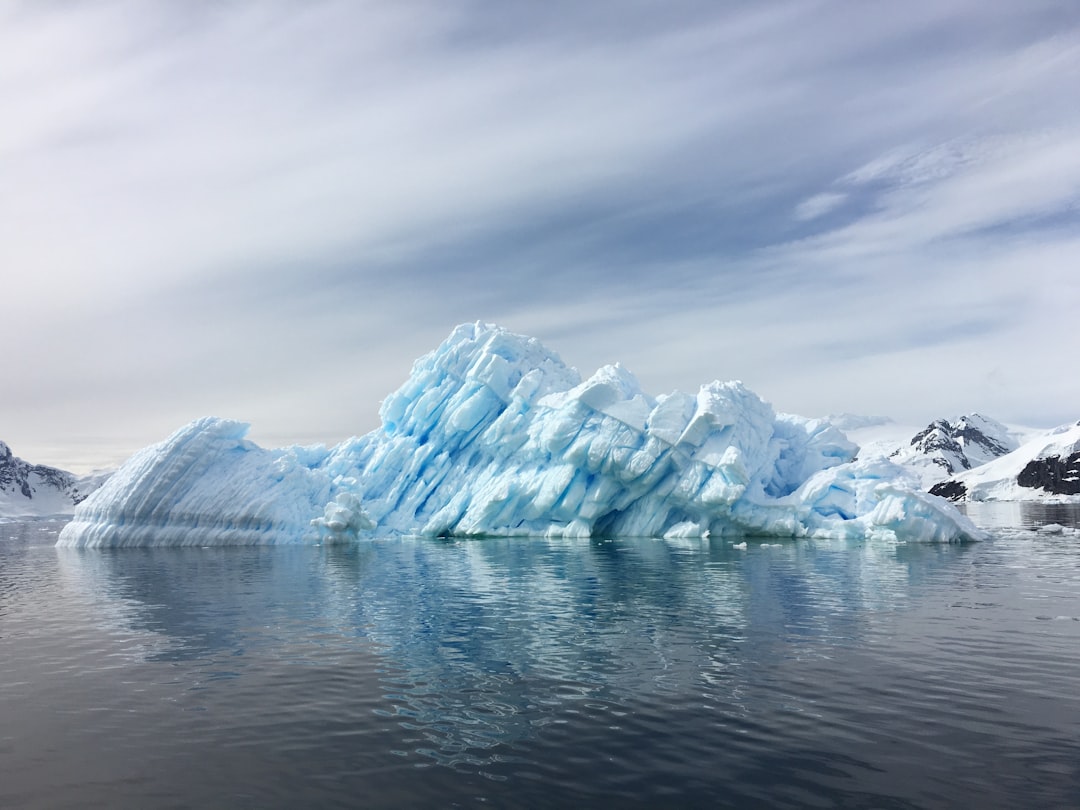The Drake Passage, a body of water that separates South America from Antarctica, is renowned for its tumultuous seas and unpredictable weather. Stretching approximately 800 kilometers (500 miles) from Cape Horn to the Antarctic Peninsula, this passage is not only a vital maritime route but also a significant geographical feature that has captured the imagination of explorers, scientists, and adventurers alike. The waters of the Drake Passage are often characterized by their rough conditions, with strong currents and high waves that can challenge even the most seasoned mariners.
This unique marine environment serves as a gateway to the Antarctic, making it an essential point of interest for those seeking to explore the southernmost continent. The passage is named after Sir Francis Drake, the English sea captain and explorer who was the first to navigate these waters in the late 16th century. His journey marked a pivotal moment in maritime history, as it opened up new routes for exploration and trade.
Today, the Drake Passage continues to be a focal point for scientific research and adventure tourism, drawing thousands of visitors each year who are eager to experience its raw beauty and formidable nature. As one of the most iconic maritime routes in the world, the Drake Passage stands as a testament to the power of nature and the enduring spirit of exploration.
Key Takeaways
- The Drake Passage is a body of water between South America’s Cape Horn and the South Shetland Islands of Antarctica, known for its rough seas and strong winds.
- The significance of the Drake Passage in Antarctic exploration lies in its role as the main gateway for ships traveling to and from the Antarctic Peninsula.
- When preparing for the journey across the Drake Passage, travelers should expect rough seas, strong winds, and the possibility of seasickness.
- The wildlife of the Drake Passage includes various species of seabirds, whales, and seals, making it a popular destination for wildlife enthusiasts.
- The geological and oceanographic features of the Drake Passage contribute to its reputation as one of the most challenging and unpredictable bodies of water to navigate.
The significance of the Drake Passage in Antarctic exploration
The Drake Passage holds immense significance in the context of Antarctic exploration. Historically, it has served as a critical route for explorers venturing into the uncharted territories of Antarctica. The passage not only connects the Atlantic and Pacific Oceans but also acts as a conduit for ocean currents that influence global climate patterns.
For early explorers like Ernest Shackleton and Robert Falcon Scott, navigating these treacherous waters was often a rite of passage that tested their resolve and determination. The challenges posed by the Drake Passage were emblematic of the broader struggles faced during their expeditions, making successful crossings a point of pride and achievement. In contemporary times, the Drake Passage remains vital for scientific research and environmental monitoring.
Researchers utilize this route to access remote areas of Antarctica, where they study climate change, glacial movements, and marine ecosystems. The passage’s unique oceanographic features provide valuable insights into global climate systems, making it an essential area for ongoing scientific inquiry. As such, the Drake Passage is not merely a geographical obstacle; it is a crucial element in understanding the complexities of our planet’s climate and ecosystems.
Preparing for the journey: what to expect when crossing the Drake Passage

Preparing for a journey across the Drake Passage requires careful planning and consideration. Travelers embarking on this adventure should be aware that conditions can change rapidly, and being equipped with the right gear is essential. Warm clothing, waterproof outer layers, and sturdy footwear are crucial for staying comfortable during the crossing.
Additionally, travelers should consider packing seasickness remedies, as many individuals experience motion sickness due to the passage’s notorious waves. Understanding what to expect can help mitigate anxiety and enhance the overall experience. The journey itself typically takes around two days, during which passengers can expect to encounter a range of weather conditions.
From calm seas to turbulent waves, the unpredictability of the Drake Passage adds an element of excitement to the voyage. Many cruise operators provide educational programs during the crossing, offering insights into the region’s wildlife, geology, and history. This combination of preparation and education allows travelers to appreciate the significance of their journey while also preparing them for the challenges that lie ahead.
The wildlife of the Drake Passage
| Species | Population | Conservation Status |
|---|---|---|
| Wandering Albatross | 10,000 pairs | Vulnerable |
| Antarctic Fur Seal | 3-4 million | Least Concern |
| Blue Whale | Unknown | Endangered |
| Antarctic Petrel | Unknown | Least Concern |
The Drake Passage is teeming with diverse marine life, making it a prime location for wildlife enthusiasts. The nutrient-rich waters support an array of species, including various types of whales, seals, and seabirds. Among the most commonly spotted whales are humpback whales, orcas, and minke whales, which can often be seen breaching or feeding in these waters.
The presence of these magnificent creatures adds an exhilarating dimension to any journey across the passage, as travelers may witness their grace and power firsthand. In addition to marine mammals, the Drake Passage is home to numerous seabird species that thrive in its harsh environment. Albatrosses, petrels, and skuas are frequently observed soaring above the waves or diving for fish below.
These birds are not only fascinating to watch but also play a crucial role in maintaining the ecological balance of the region. The rich biodiversity found in the Drake Passage underscores its importance as a marine habitat and highlights the need for ongoing conservation efforts to protect these vulnerable species.
The geological and oceanographic features of the Drake Passage
The geological and oceanographic features of the Drake Passage are as captivating as its wildlife. The passage is characterized by its deep-sea trenches and underwater ridges, which contribute to its complex hydrodynamics. The interaction between warm and cold ocean currents creates a dynamic environment that influences weather patterns both locally and globally.
The Antarctic Circumpolar Current flows through this region, making it one of the most powerful ocean currents on Earth. This current plays a significant role in regulating temperatures and nutrient distribution across vast oceanic areas. The geological history of the Drake Passage is equally intriguing.
Formed millions of years ago during tectonic shifts, this area has been shaped by volcanic activity and glacial movements over time. The remnants of ancient landforms can still be observed today, providing valuable insights into Earth’s geological past. Understanding these features not only enhances scientific knowledge but also enriches travelers’ experiences as they navigate through this remarkable landscape.
The history of exploration in the Drake Passage

The history of exploration in the Drake Passage is marked by tales of bravery and perseverance. Sir Francis Drake’s expedition in 1578 was one of the first recorded crossings, paving the way for future explorers who sought to uncover the mysteries of Antarctica. Throughout the 19th century, numerous expeditions ventured into these waters, driven by a desire for discovery and scientific advancement.
Explorers like James Cook and Ernest Shackleton faced immense challenges as they navigated through treacherous conditions in search of new lands and knowledge. The legacy of these early explorers continues to inspire modern adventurers who traverse the same waters today. Their stories serve as reminders of human resilience in the face of nature’s formidable forces.
As technology has advanced, so too has our understanding of this region; however, the spirit of exploration remains unchanged. The Drake Passage stands as a symbol of humanity’s quest for knowledge and adventure, inviting new generations to embark on their own journeys into the unknown.
The challenges of navigating the Drake Passage
Navigating the Drake Passage presents numerous challenges that can test even experienced sailors. The unpredictable weather patterns often lead to sudden storms that can create hazardous conditions at sea. High waves and strong winds can make sailing difficult, requiring skilled navigation and quick decision-making from crew members.
For travelers crossing this passage on cruise ships or smaller vessels, these challenges can evoke feelings of excitement mixed with apprehension. In addition to weather-related challenges, there are also logistical considerations when traversing this remote region. Limited access to emergency services means that safety protocols must be strictly adhered to during crossings.
Crew members are trained to handle emergencies effectively; however, passengers should remain vigilant and follow safety guidelines throughout their journey. Understanding these challenges can help travelers appreciate the skill required to navigate such a formidable body of water.
The experience of crossing the Drake Passage
Crossing the Drake Passage is an experience unlike any other—a blend of anticipation, awe, and exhilaration that leaves a lasting impression on all who undertake it. As travelers embark on their journey, they are often filled with excitement at the prospect of witnessing one of nature’s most powerful maritime environments. The sight of towering waves crashing against rocky outcrops serves as a reminder of both nature’s beauty and its ferocity.
During this crossing, passengers have opportunities to engage with knowledgeable guides who share insights about the region’s ecology and history. Educational programs enhance their understanding while fostering a deeper appreciation for this unique environment. Many travelers find themselves captivated by moments spent observing wildlife or marveling at breathtaking vistas that unfold before them.
These experiences create lasting memories that resonate long after they have returned home.
The impact of climate change on the Drake Passage
Climate change poses significant threats to ecosystems worldwide, and the Drake Passage is no exception. Rising ocean temperatures have begun to alter marine habitats, affecting species distribution and abundance within these waters. As ice melts in Antarctica due to warming temperatures, freshwater influxes into surrounding seas can disrupt established currents—potentially leading to unforeseen consequences for both marine life and global climate patterns.
Additionally, changes in sea ice extent impact migratory patterns for various species that rely on stable ice conditions for breeding or feeding grounds. Researchers continue to monitor these changes closely; understanding how climate change affects this vital region is crucial for developing effective conservation strategies moving forward. The urgency surrounding these issues highlights why continued exploration and research in areas like the Drake Passage remain essential.
The future of exploration in the Drake Passage
The future of exploration in the Drake Passage holds great promise as advancements in technology open new avenues for research and discovery. Innovations such as autonomous underwater vehicles (AUVs) allow scientists to gather data from previously inaccessible depths while minimizing human impact on fragile ecosystems. These tools enhance our understanding not only of local marine environments but also their connections to broader global systems.
Moreover, increased interest in sustainable tourism presents opportunities for responsible exploration within this region. By prioritizing eco-friendly practices and supporting conservation efforts, travelers can contribute positively while experiencing firsthand one of Earth’s last frontiers. As awareness grows regarding environmental issues facing our planet today—particularly those related to climate change—the importance placed on preserving unique ecosystems like those found within the Drake Passage will only continue to rise.
reflecting on the journey to Antarctica via the Drake Passage
Reflecting on a journey through the Drake Passage evokes feelings of wonderment and respect for nature’s power and beauty. This formidable body of water serves not only as a gateway to Antarctica but also as a reminder of humanity’s enduring spirit of exploration—a testament to our desire to push boundaries in pursuit of knowledge and adventure. Each crossing offers travelers an opportunity to connect with both history and nature while fostering appreciation for one another’s shared responsibility toward protecting fragile ecosystems.
As explorers continue venturing into this remarkable region—armed with knowledge gained from past expeditions—they carry forward legacies built upon courage, curiosity, and respect for our planet’s wonders. The Drake Passage stands as an enduring symbol: one that invites all who dare cross its waters into an extraordinary world where adventure awaits at every turn—a world worth exploring responsibly for generations yet unborn.
The Drake Passage, a treacherous stretch of water between the southern tip of South America and Antarctica, is renowned for its challenging sailing conditions and rich marine biodiversity.
